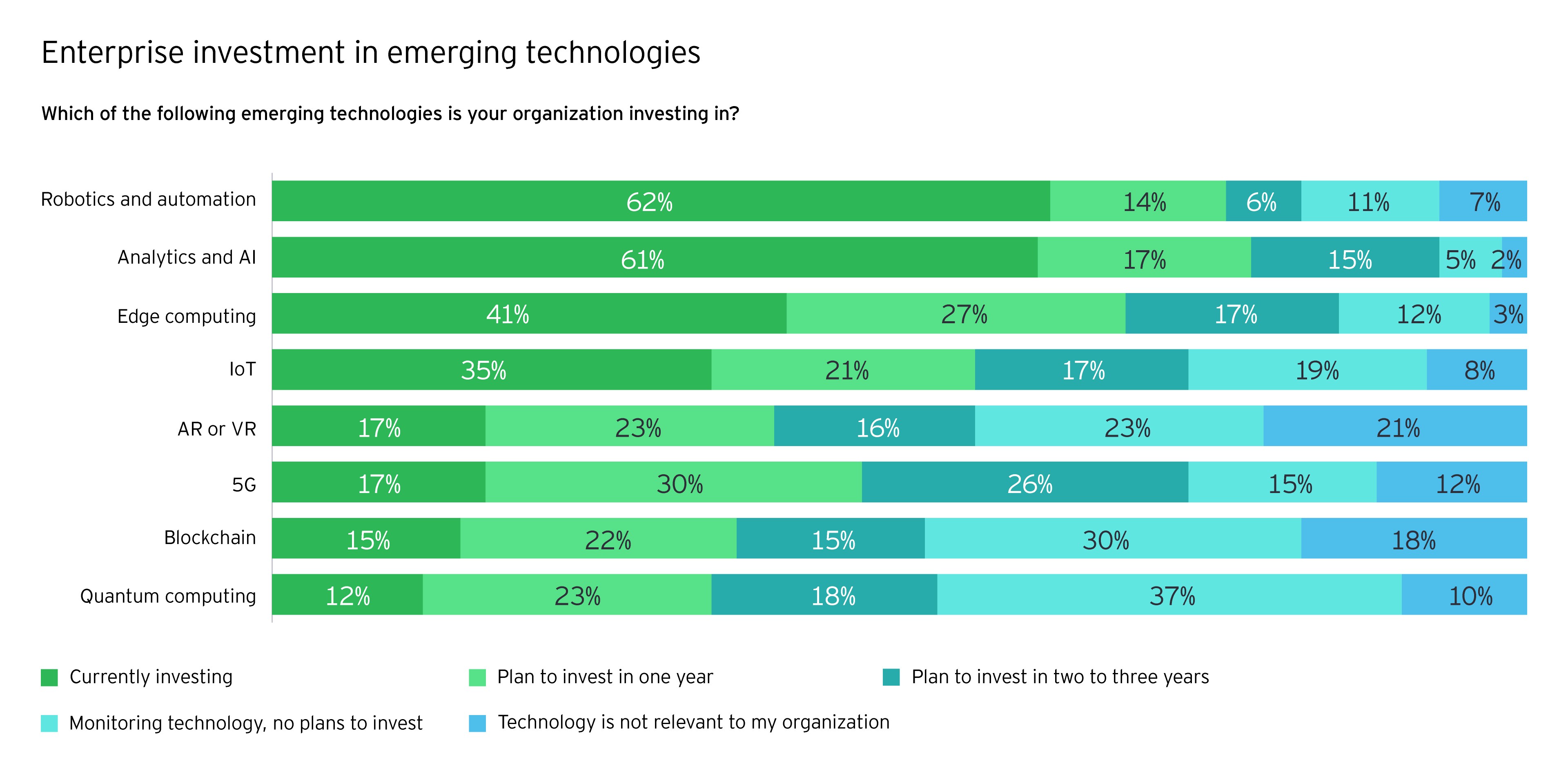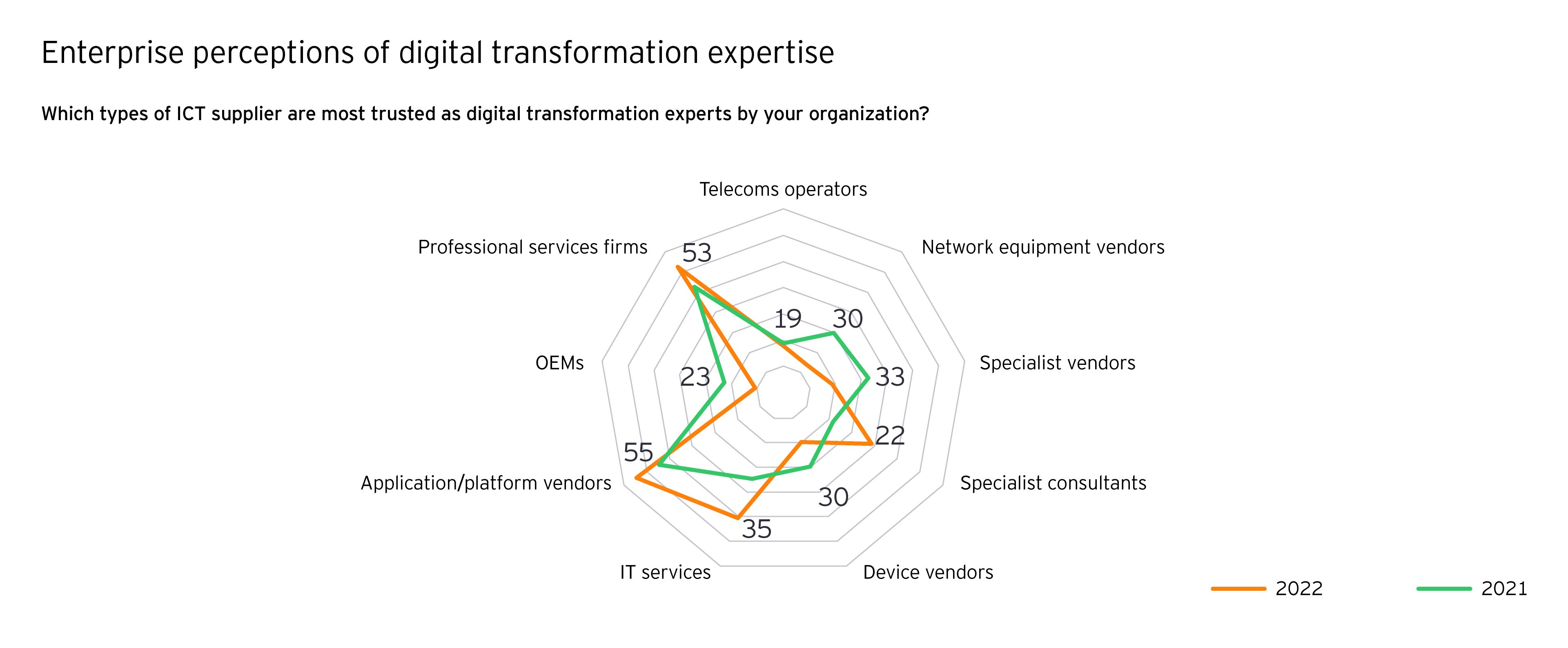At the same time, 71% of businesses would consider purchasing 5G through an intermediary such as a mobile virtual network operator (MVNO) and 64% say that directly acquiring 5G spectrum could be important for them.
Taken together, these disruptive customer signals suggest that telcos’ traditional relationships with enterprise customers are under pressure — and that more agile go-to-market strategies are essential in the world of 5G-powered IoT.
4. 5G’s relationship to other technologies is in focus but cyber risks receive less attention
Businesses cite poor understanding of 5G’s relationship to other emerging technologies as their number one internal challenge, up from fifth last year. Looking ahead, exploring 5G’s relationship to other technologies is also their top priority. This underlines their desire to exploit a mutually beneficial combination of “frontier” technologies and implies that organizations would benefit from ongoing education around the basics of emerging technologies.
Interestingly, only 22% of organizations view mitigating cyber threats as a priority within their IoT agenda — ranking lowest — and mitigating cyber risks ranks only sixth as a 5G priority. Given the range of potential attack surfaces present in Industry 4.0, enterprises should ensure that ‘security by design’ principles underpin their 5G and IoT deployments as this could become a dangerous blind spot if this trend continues.
5. Network vendors are gaining trust as transformation experts while telcos are lagging
As enterprises look to their technology and telecoms providers to support their 5G journeys, our findings cast an interesting light on the selection criteria they apply. Competitive pricing dominates as the top attribute currently sought by enterprises in vendors, overtaking speed of execution. And looking to the future, enterprises rate suppliers’ ability to co-create and customize solutions as the two most desirable attributes.
The importance of collaboration underlines how enterprises are looking for transformation partners, not just technology suppliers. However, enterprises’ opinions are divided on which suppliers have digital transformation expertise. Application and platform vendors lead on 55%, narrowly ahead of professional services firms (53%), while network equipment vendors (30%) are gaining ground year-on year.





